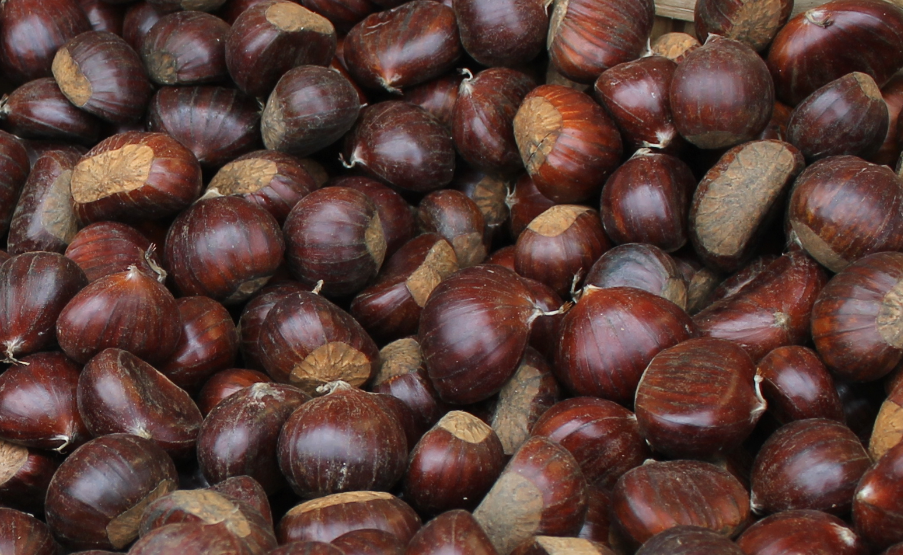Castagne – Fresh chestnuts
Description:
the main varieties grown in Piedmont are:
- marroni: Marroni of Chiusa di Pesio, Marroni of Pellice Valley and Marroni of Susa;
- chestnuts for fresh consumption: Castagne della Madonna, Garrone Rosso, Garrone Nero and Bracalla (in the territory of Cuneo);
- dry chestnuts and flours: Gabbiana, Frattona (Tanaro Valley), Gioviasca e Pelosa (province of Turin).
Origin:
its exact origin is unknown; the chestnut tree is probably native to Asia Minor and southern Europe. In Italy there are about three hundred varieties. Besides the cultivars of the European chestnut, however, there are also Eurojapanese hybrids and entities belonging to the Japanese chestnut. The European species is used for both the fruits both for the wood, while the eastern species are mainly used for the fruit.
The fruit:
achene with smooth and leathery dark brown pericarp. At the base there is a clear scar, while at the height the remnants of styles.
Maturation:
September 30 – October 31 (browns and chestnuts)
Flavor:
sweet and delicate.
Curiosity:
also called “bread tree”, the chestnut tree has been for centuries an important food resource for the Piedmont mountains, integrating the low availability of cereals.
It's good because:
chestnuts are very nutritious fruits that can provide a high caloric intake. Being highly energy they are recommended for sportsmen and those who make an intense physical activity. They contain vegetable proteins, vitamins (B1 and B2) and minerals (potassium, phosphorus and calcium). They are rich in fiber and easily assimilated sugars that make them easily digestible. The chestnut flour, being gluten-free, can be used in the preparation of baked products for the subjects who are intolerant to cereals.

